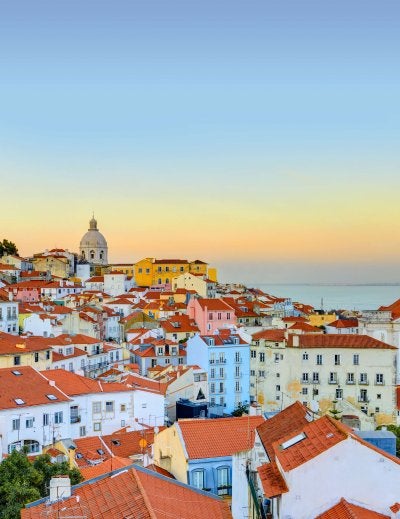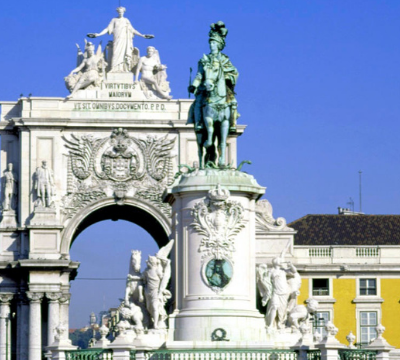
Travel Guide to Palermo’s Norman Palace
The Norman Palace, or Palazzo dei Normanni, is one of Palermo’s most celebrated landmarks and a symbol of Sicily’s diverse cultural heritage. Sitting atop the city, this grand structure combines centuries of Arab, Norman, Byzantine, and Spanish influence. As one of Europe’s oldest royal residences, it has served as a centre of power for many civilizations and now houses the Sicilian Regional Assembly. Recognised by UNESCO as part of the “Arab-Norman Palermo and the Cathedral Churches of Cefalù and Monreale” site, the palace stands as a remarkable testament to Sicily’s complex history. If you’re planning a visit to the island, it’s also worth exploring other highlights listed in this guide to things to do in Sicily.
A Journey Through History
The origins of the Norman Palace trace back to the 9th century, during the Arab rule of Sicily. Initially built as a fortress known as a “Qsar,” it served a defensive purpose between the rivers Kemonia and Papireto. The structure may have been erected over a former Phoenician fortress.
When the Normans conquered Palermo in 1072, they transformed the fortress into a royal palace and the heart of their new kingdom. Roger II, crowned King of Sicily in 1130, expanded the palace and established a sophisticated royal court that fused Arab, Byzantine, and Latin traditions. Under his patronage, the Palatine Chapel was constructed in 1132 and consecrated in 1140.
Throughout the following centuries, the palace evolved under different rulers. The Swabians maintained its administrative role, while the Spanish viceroys in the 16th century restored and expanded it with new bastions and a Renaissance façade. The Bourbons later completed the decorative works. Since 1946, the Norman Palace has been home to the Sicilian Regional Assembly, while part of the complex still serves a military function.
Architectural Brilliance
The Norman Palace perfectly embodies the Arab-Norman architectural style, blending Islamic, Byzantine, and Western elements. The sturdy exterior walls and towers reflect its origins as a fortress, while the interior reveals refined details that highlight its royal transformation.
Successive rulers added courtyards, halls, chapels, and gardens, creating a complex structure with layers of architectural styles. The Renaissance façade, Baroque decorations, and the remains of earlier fortifications together illustrate the island’s multicultural evolution.
Highlights of the Norman Palace
Cappella Palatina (Palatine Chapel)
The jewel of the palace, the Palatine Chapel, is one of Sicily’s finest artistic treasures. Commissioned by Roger II in 1132, it showcases golden mosaics depicting biblical scenes, including the majestic Christ Pantocrator. The chapel’s decoration is a blend of Islamic, Byzantine, and Norman artistry, featuring geometric patterns, marble inlays, and an intricate muqarnas ceiling crafted by Arab artisans. Its trilingual inscriptions—Greek, Arabic, and Latin—symbolize Sicily’s cultural coexistence during the Norman era.
The King’s Apartments
These rooms reflect the opulent life of Sicily’s Norman rulers, with ornate ceilings, frescoes, and furniture.
Sala di Ruggero II (Roger II’s Hall)
Once the royal bedroom, this hall features exquisite mosaics of animals and hunting scenes inspired by Byzantine art.
Sala dei Venti (Hall of Winds)
Admired for its fine decorative detail and artistry.
Sala d’Ercole (Hercules Hall)
Decorated during the Bourbon period with frescoes depicting Hercules, this hall today hosts the Sicilian Regional Assembly.
Astronomical Observatory
Established in the 18th century, it is one of Europe’s earliest observatories and continues to attract visitors with its historical instruments.
Courtyards and Archaeological Layers
The palace’s courtyards, such as the Fountain Courtyard and Maqueda Courtyard, reflect the Renaissance and Spanish influence. Beneath the palace lie remains of a Punic settlement discovered in 1984, offering a glimpse into Palermo’s ancient past.
Cultural and Political Significance
The Norman Palace has always been a political and cultural hub. From hosting the courts of Roger II and Frederick II to serving as the residence of Spanish viceroys, it has long embodied Sicily’s role as a meeting point of civilizations.
Its inclusion in the UNESCO World Heritage list highlights its importance as a symbol of coexistence among Muslim, Byzantine, and Latin cultures. The palace continues to play a key role in modern governance as the home of the Sicilian Regional Assembly.
Visitor Information
Location: Piazza del Parlamento, 1, 90129 Palermo, Sicily
Opening Hours: Monday to Saturday, 8:30 am–4:30 pm; Sunday, 8:30 am–12:30 pm. Check the official website before visiting, as hours and access may vary.
Tickets: Full access tickets typically cost between €15 and €19 and include entry to the palace, Palatine Chapel, and gardens. Booking in advance is recommended, especially during peak season.
Tours: Guided tours (approximately 1.5 hours) are available with English-speaking guides.
Tips: Modest clothing is required in the chapel. Photography is permitted in most areas, though flash is often prohibited.
Accessibility: The site is wheelchair accessible.
Nearby Attractions
The Norman Palace is within walking distance of many of Palermo’s highlights. The Palermo Cathedral, another UNESCO site, is only a few minutes away. Other nearby landmarks include the Church of San Cataldo, the Church of San Giovanni degli Eremiti, and the Church of Santa Maria dell’Ammiraglio (Martorana). You can also visit the Castle of Zisa, the Admiral’s Bridge, and the lively Ballarò Market for a taste of local life.
FAQs
What makes the Norman Palace significant?
It is one of the oldest royal residences in Europe, representing the blending of Arab, Norman, and Byzantine traditions.
What is the Cappella Palatina?
The Palatine Chapel is the palace’s crown jewel, famous for its golden mosaics and multicultural design.
Is the Norman Palace part of a UNESCO site?
Yes, it belongs to the “Arab-Norman Palermo and the Cathedral Churches of Cefalù and Monreale” World Heritage Site.
How much time should I spend visiting?
Allow at least two hours to explore the palace, chapel, and courtyards.
Can I take photos?
Yes, but flash photography is restricted inside the chapel.



